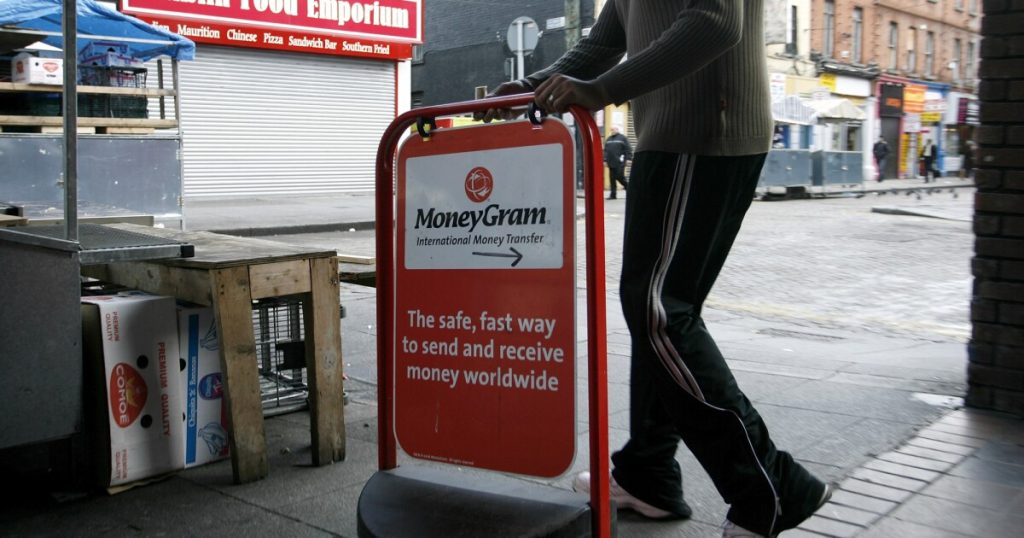Ripple, MoneyGram and FV Bank are among the companies betting that expensive cross-border transfers will open a door to stablecoin payments, with each firm making progress in recent days.
Stablecoins overall are expanding rapidly, with a total market capitalization passing $200 billion this week, according to CCData and DefiLlama, with a growth rate that could double the market cap to $400 billion by the end of 2025.
Given the volatility of cryptocurrency, stablecoins, which are backed by a reserve of traditional currency such as U.S. dollars or euros, are considered a safer option for investment or to support other financial services.
“Stablecoin continues to be the most compelling use case for crypto in general,” said Tony DeSanctis, a senior director at Cornerstone Advisors.
But thus far,
Making moves
Despite the lack of a stablecoin payment market, technology companies are
“There is a very strong case for cross-border payments and remittances,” said Miles Pashini, CEO of FVBank, adding that stablecoins can be a more accessible alternative to traditional currency rather than a replacement.
FV Bank, a San Juan, Puerto Rico-based institution that specialized in digital asset banking, this week enabled the stablecoin USDT, or Tether, for direct deposits. This enables account holders to receive USDT as U.S. dollars into their FV Bank accounts with the stablecoin/dollar conversion happening in real time. FV earlier integrated with Circle’s USDC for the same purpose, and plans to add other coins in the future.
The stablecoin and the underlying blockchain enable an easier route to move funds between countries than traditional currencies, Pashini said.
“Someone in Latin America who wants to send $10,000 to the U.S. could use a wire, which means there would need to be a conversion and time, or they could use a stablecoin, which would arrive in minutes,” Pashini said.
In another unrelated move, MoneyGram this week partnered with cryptocurrency fintech Owlting Group to enable conversion of local national currencies to USDC.
The collaboration will be available for cash-in services in more than 30 countries in 50,000 MoneyGram locations with cash-out services in more than 30 countries in 375,000 locations. The underlying OwlPay Wallet has improved security as part of the partnership and is available on iOS and Android.
MoneyGram did not respond to a request for comment.
A third company, Ripple, which has worked with dozens of firms and organizations on digital currency and stablecoin projects, this week received a regulatory boost for its own stablecoin.
The New York Department of Financial Services approved Ripple Labs’ RLUSD stablecoin, with Ripple announcing the currency would be live soon.
RLUSD will rival Tether’s USDT and Circle’s USDC. Ripple began testing the stablecoin in August and has been lining up exchanges to support RLUSD.
Ripple, which did not respond to a request for comment, focuses much of its
That has enabled e-commerce sellers and remittance apps to support a larger number of smaller value payments. And while Ripple was initially a rival to banks, it has more recently been a partner to banks that wish to reduce their cross-border payments overhead.
Demand, but not a ton
Remittances are one of the strongest use cases for stablecoin payments in the real world, said Alenka Grealish, emerging technology in banking lead at Celent. “Remittances remain plagued by friction and relatively high costs.”
The World Bank’s MTO Index, or a measure of the average cost of remittances, was 6.56% in the most recent quarter, up from 6.30% in the prior quarter. The MTO Index for digital remittances was 5.29% and non-digital remittances was 7.23%. For banks, the average cost was 13.4%, making banks the most expensive remittance provider.
“Stablecoins can reduce the cost of and friction of remittances by delivering faster settlement times and lower foreign exchange volatility,” Grealish said, noting MoneyGram has been working to tap blockchain and stablecoins to reduce friction and costs.
But there may still be challenges in building a larger market for stablecoin payments beyond remittances, according to Grealish.
“The use of stablecoins to support remittances will likely only move the dial slightly,” Grealish said.
Remittances totaled about $860 billion last year through a combination of cash and crypto, according to Precedene Research.
“That is a tiny fraction of global consumer payments which total in the tens of trillions of dollars,” Grealish said. “Assuming the addressable market is the half of remittances being originated digitally, the total up for grabs is $430 billion.”
